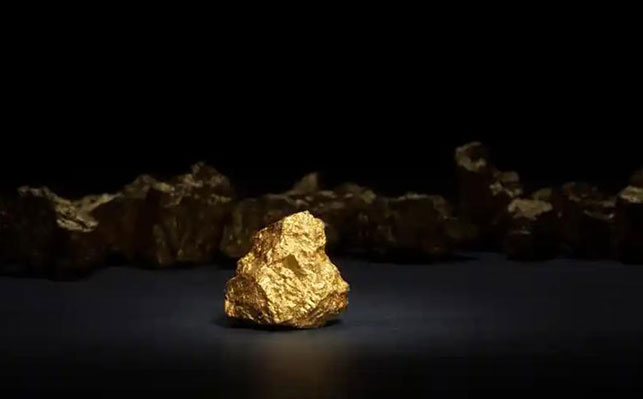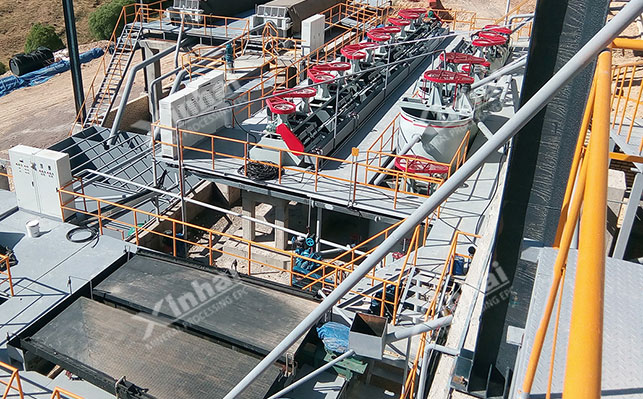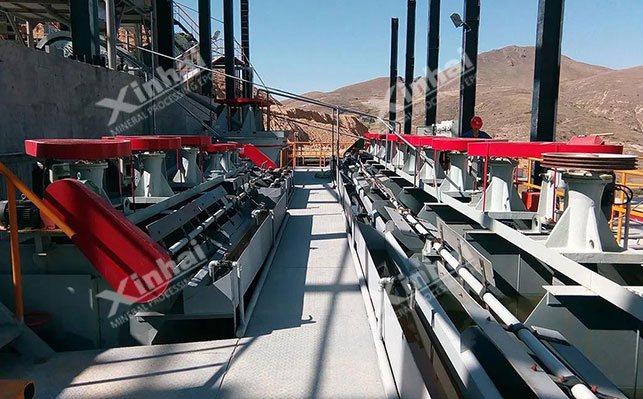
15311826613
Click to add WeChatWith gold prices high, gold tailings reprocessing has become a high-efficiency investment. It directly improves the utilization rate of gold resources through the resource-based development of tailings, effectively extends the service life of mines, and achieves "turning waste into treasure" while reducing costs and increasing efficiency.
So, how much gold in gold tailings is considered valuable and suitable for reprocessing? What other valuable elements can be recovered through tailings reprocessing? And how can these elements be effectively recovered using scientific tailings reprocessing processes? This article will introduce these questions step by step.

Gold tailings are complex mixtures remaining after initial gold beneficiation. Their composition is greatly influenced by the characteristics of the original ore and the initial beneficiation process. To determine their redevelopment value, scientific identification is necessary. A three-dimensional analysis combining chemistry, mineralogy, and process mineralogy provides a basis for subsequent development and is a recognized industry standard.
A systematic material composition identification is conducted first. Multi-element chemical analysis and phase analysis clarify the content and occurrence state, which is the foundation for value judgment.
Chemical elemental analysis: This is the main step in determining the value of gold tailings. Through spectral analysis and quantitative chemical analysis, the content of precious metals such as gold and silver, as well as valuable metal elements such as copper, lead, and zinc, can be accurately determined.
Mineral composition analysis: Using techniques such as X-ray diffraction, the types and contents of minerals in the tailings, as well as the occurrence state of gold, are identified. This is a key basis for selecting a recycling method.
Process mineralogy research: Using microscopy, scanning electron microscopy, and other methods, the particle size distribution, embedding characteristics, and symbiotic relationship with gangue minerals of valuable elements are analyzed, providing a theoretical basis for developing efficient crushing and sorting processes.

The value threshold for different elements fluctuates with market prices, but the industry has a relatively stable profit threshold.
| Valuable Elements | Industry Recycling Threshold | Profitability Conditions | Market Reference Price |
| Gold | ≥0.1g/t | Recovery rate ≥50%, recovery cost per ton of ore ≤15 yuan | Approximately 600 yuan/gram |
| silver | ≥5g/t | Recovery rate ≥ 60%, recovery cost per ton of ore ≤ 8 yuan | Approximately 6.8 yuan/gram |
| Copper | ≥0.2% | Recovery rate ≥ 70%, recovery cost per ton of ore ≤ 20 yuan. | Approximately 72,000 yuan/ton. |
| sulfur | ≥15% | Can be processed into sulfuric acid (purity ≥98%), with a recovery cost of ≤12 yuan per ton of ore | Approximately 650 yuan/ton (sulfuric acid) |
| iron | ≥25% | Iron concentrate grade ≥60%, recovery rate ≥75% | Approximately 1350 RMB/ton (iron concentrate) |
Different valuable elements in gold tailings require specific recovery technologies. Currently, the industry has established a mature recovery process system. The key is to select the process based on the element's occurrence state, avoiding blindly applying any single technology.
The gold recovery process needs to be selected based on both particle size and occurrence state.

Coarse-grained gold tailings reprocessing: Typically, particles with a size of -0.074mm (<60%) can be processed using a combined gravity separation + carbon adsorption process or a gravity separation-flotation process. Gravity separation can be performed using equipment such as spiral sluices and shaking tables for pre-enrichment. The enriched fine-grained gold is then adsorbed into the tailings using activated carbon. For very fine-grained gold and sulfide-encapsulated gold, after gravity enrichment, flotation is used with a high-efficiency collector to enrich the gold-bearing sulfides into the concentrate, achieving a total recovery rate of 70%-80%.
Fine-grained gold tailings reprocessing: When particles with a size of -0.074mm (≥70%) can be processed using an enhanced flotation + carbon leaching process. By adding a high-efficiency collector, gold is first enriched into the sulfide concentrate, and then the concentrate is subjected to carbon leaching for gold extraction, achieving a total recovery rate of 75%-85%.
High-Oxidation Gold Tailings: When the oxidation rate is ≥50%, a bio-oxidation + carbon leaching process can be used. *Thiobacillus ferrooxidans* decomposes the iron oxide encapsulating the gold, followed by carbon leaching to extract gold, achieving a recovery rate of 65%-75%.
The recovery of associated elements in gold tailings needs to be coordinated with the gold recovery process to achieve multiple harvests from a single mine. This is a key strategy for improving profitability in the industry.

Associated Silver Reprocessing and Recovery: Silver can be simultaneously adsorbed during the gold carbon leaching process. Subsequent desorption, electrolysis, and gold-silver separation processes can recover silver, achieving a silver recovery rate of 60%-70%. If silver exists in the form of silver sulfide, it can be simultaneously enriched during the flotation stage, with a silver concentrate grade reaching 2000-3000 g/t.
Associated Copper/Lead/Zinc Reprocessing: A priority flotation process is employed, flotating copper concentrate before gold, followed by lead-zinc mixed concentrate, and then gold-bearing sulfide ore. This sequential recovery of copper, lead, zinc, and gold achieves a comprehensive recovery rate of 70%-80% for copper and 65%-75% for lead and zinc.
Associated Sulfur/Iron Recovery: When sulfur exists as pyrite, it can be flotated to produce sulfur concentrate for sulfuric acid production. This concentrate can be sold directly to sulfuric acid plants or used in a self-built sulfuric acid production line. When iron exists as magnetite, it is recovered using a high-gradient magnetic separator (magnetic field strength 1500-2000 Gs). The iron concentrate grade can reach 60%-65%. The recovery of these two elements reduces the unit cost of gold recovery.
Given the current high gold prices, the recovery of gold tailings not only improves gold resource utilization but also brings stable additional revenue to the mine. The scientific development of gold tailings involves two key aspects: first, clarifying its value through elemental analysis and process testing; and second, selecting suitable processes and partnering with end-to-end partners to ensure successful implementation. Xinhai Mining Equipment has extensive experience in gold beneficiation and can provide a full-chain mining service tailored to user needs, encompassing testing, design, equipment manufacturing, installation and commissioning, personnel training, and operational guidance. This helps mines avoid the risks of "blind investment and disconnected supply chains," transforming gold tailings from waste into a continuously profitable resource. For mine investors, seizing the opportunity of gold tailings recovery means seizing additional profit potential during periods of high gold prices.